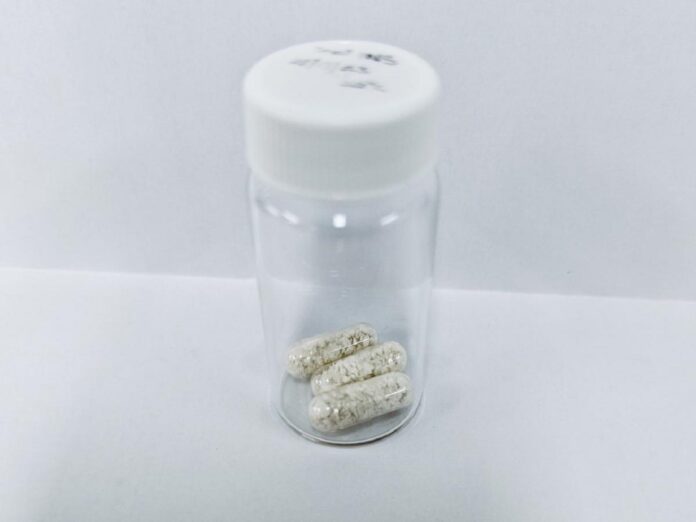About 425 million people globally have diabetes, and around 75 million of them use insulin injections daily. Soon, there might be a new option instead of needles or insulin pumps. Scientists have discovered an intelligent insulin that can be taken by eating a capsule or, even more conveniently, within a piece of chocolate.
This new insulin is enclosed in tiny nano-carriers inside the capsule or chocolate. These particles are small, about 1/10,000th the width of a human hair, so tiny that they can’t be seen with a regular microscope.
Professor Peter McCourt at UiT Norway’s Arctic University. One of the researchers behind the study explains, “This way of taking insulin is more precise because it delivers the insulin rapidly to the areas of the body that need it most. When you take insulin with a syringe, it is spread throughout the body where it can cause unwanted side effects.”
A while ago, researchers from the University of Sydney and Sydney Local Health District, working with UiT, discovered a way to use nano-carriers to deliver medicines to the liver. This method has since been improved in Australia and Europe.
Many medicines are traditionally taken orally, but insulin must be injected into the body. The issue with using a nano-carrier for insulin was that it broke down in the stomach, preventing it from reaching the necessary parts of the body. However, the researchers have now successfully overcome this challenge.
McCourt, a liver biologist, said, “We have created a coating to protect the insulin from being broken down by stomach acid and digestive enzymes on its way through the digestive system, keeping it safe until it reaches its destination, namely the liver.”
The coating on the insulin breaks down in the liver when blood sugar levels are high, thanks to specific enzymes. This releases insulin to act in the liver, muscles, and fat, removing sugar from the blood.
Nicholas J. Hunt and Victoria Cogger from the University of Sydney lead this project. According to Hunt, this method is more practical and patient-friendly for managing diabetes. It lowers the risk of low blood sugar events, like hypoglycemia. It allows controlled insulin release based on the patient’s needs. This is unlike injections, where all the insulin is released at once.
The new method functions like how insulin works in healthy individuals. In healthy bodies, the pancreas produces insulin, which is absorbed in the liver, maintaining stable blood sugar levels. Similarly, in the new method, the nano-carrier releases insulin in the liver, either for uptake or to circulate in the body through the bloodstream.
Injecting insulin under the skin with a syringe, as commonly done, directs more insulin to muscles and fatty tissues than the pancreas normally would. This can lead to fat accumulation and, potentially, dangerously low blood sugar (hypoglycemia) for people with diabetes.
The new method causes fewer side effects. Moreover, you don’t have to use a needle, making it a more discreet way to take the medicine. Additionally, this type of insulin doesn’t require refrigeration.
The oral insulin has been tested on nematodes, mice, and rats. Recently, it was also tested on baboons in Australia’s National Baboon Colony. To make the oral insulin tasty, it was mixed into sugar-free chocolate, which was well-received. In the study with 20 baboons, their blood sugar decreased after taking the medicine.
The oral insulin was tested on healthy baboons, as well as on mice and rats with diabetes. The animals did not experience low blood sugar events, weight gain, or fat accumulation in the liver—addressing challenges seen with injectables and other oral insulins. The next step is to test this new method on humans.
Trials on humans for oral insulin are set to begin in 2025, led by the company Endo Axiom Pty Ltd. The clinical trials involve three phases. In the first phase, the focus is on investigating the safety of oral insulin and assessing hypoglycemia incidence in healthy and type 1 diabetic patients. The team is eager to replicate the positive results observed in baboons, particularly the absence of hypoglycemia in humans. These experiments adhere to strict quality standards and collaborate with physicians to ensure participant safety.
Once phase I confirms its safety for humans, phase 2 trials will explore how it can replace injections for diabetic patients, according to the researcher. The researchers aim to make the new medicine available for everyone within 2-3 years.
The researchers express optimism about the new medicine’s potential to be available for widespread use within the next 2-3 years. This study marks a significant stride toward offering diabetes patients a needle-free alternative, potentially transforming the diabetes management landscape.
Journal reference:
- Hunt, N.J., Lockwood, G.P., Heffernan, S.J. et al. Oral nanotherapeutic formulation of insulin with reduced episodes of hypoglycemia. Nature Nanotechnology. DOI: 10.1038/s41565-023-01565-2.
